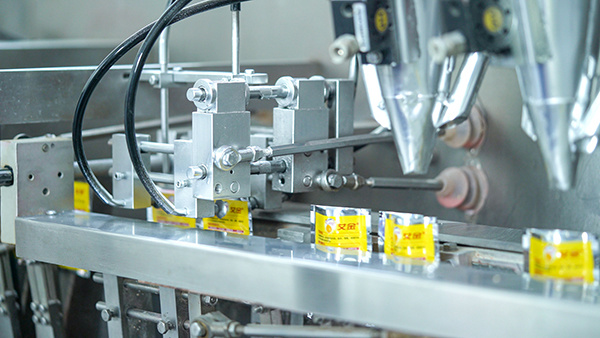Azoxystrobin 20% + Cyproconazole 14% SC
Azoxystrobin NOMENCLATURE
Common name azoxystrobine ((f) F-ISO); azoxystrobin (BSI, E-ISO)
IUPAC name methyl (E)-2-{2-[6-(2-cyanophenoxy)pyrimidin-4-yloxy]phenyl}-3-methoxyacrylate
Chemical Abstracts name methyl (E)-2-[[6-(2-cyanophenoxy)-4-pyrimidinyl]oxy]-α-(methoxymethylene)benzeneacetate
CAS RN [131860-33-8], formerly [215934-32-0]
Azoxystrobin Biochemistry Quinone outside inhibitor. Inhibits mitochondrial respiration by blocking electron transfer between cytochrome b and cytochrome c1, at the ubiquinol oxidising site. Controls pathogenic strains resistant to the 14-demethylase inhibitors, phenylamides, dicarboxamides or benzimidazoles.
Azoxystrobin Mode of action Fungicide with protectant, curative, eradicant, translaminar and systemic properties. Inhibits spore germination and mycelial growth, and also shows antisporulant activity.
Azoxystrobin Uses Controls the following pathogens, at application rates between 100 to 375 g/ha: Erysiphe graminis, Puccinia spp., Leptosphaeria nodorum, Septoria tritici and Pyrenophora teres on temperate cereals;and Rhizoctonia solani on rice; Plasmopara viticola and Uncinula necator on vines; Sphaerotheca fuliginea and Pseudoperonospora cubensis on cucurbitaceae; Phytophthora infestans and Alternaria solani on potato and tomato; Mycosphaerella arachidis, Rhizoctonia solani and Sclerotium rolfsii on peanut; Monilinia spp. and Cladosporium carpophilum on peach; Pythium spp. and Rhizoctonia solani on turf; Mycosphaerella spp. on banana; Cladosporium caryigenum on pecan; Elsinoë fawcettii, Colletotrichum spp. and Guignardia citricarpa on citrus; Colletotrichum spp. and Hemileia vastatrix on coffee.
Azoxystrobin Phytotoxicity Good crop safety, except on some varieties of apple (e.g. McIntosh, Cox).
Cyproconazole APPLICATIONS
Cyproconazole Biochemistry Sterol demethylation inhibitor.
Cyproconazole Mode of action Systemic fungicide with protective, curative, and eradicant action. Absorbed rapidly by the plant, with translocation acropetally.
Cyproconazole Uses Foliar, systemic fungicide for control of Septoria, rust, powdery mildew, Rhynchosporium, Cercospora and Ramularia in cereals and sugar beet, at 60-100 g/ha; and rust, Mycena, Sclerotinia and Rhizoctonia in coffee and turf.












Azoxystrobin NOMENCLATURE
Common name azoxystrobine ((f) F-ISO); azoxystrobin (BSI, E-ISO)
IUPAC name methyl (E)-2-{2-[6-(2-cyanophenoxy)pyrimidin-4-yloxy]phenyl}-3-methoxyacrylate
Chemical Abstracts name methyl (E)-2-[[6-(2-cyanophenoxy)-4-pyrimidinyl]oxy]-α-(methoxymethylene)benzeneacetate
CAS RN [131860-33-8], formerly [215934-32-0]
Azoxystrobin Biochemistry Quinone outside inhibitor. Inhibits mitochondrial respiration by blocking electron transfer between cytochrome b and cytochrome c1, at the ubiquinol oxidising site. Controls pathogenic strains resistant to the 14-demethylase inhibitors, phenylamides, dicarboxamides or benzimidazoles.
Azoxystrobin Mode of action Fungicide with protectant, curative, eradicant, translaminar and systemic properties. Inhibits spore germination and mycelial growth, and also shows antisporulant activity.
Azoxystrobin Uses Controls the following pathogens, at application rates between 100 to 375 g/ha: Erysiphe graminis, Puccinia spp., Leptosphaeria nodorum, Septoria tritici and Pyrenophora teres on temperate cereals;and Rhizoctonia solani on rice; Plasmopara viticola and Uncinula necator on vines; Sphaerotheca fuliginea and Pseudoperonospora cubensis on cucurbitaceae; Phytophthora infestans and Alternaria solani on potato and tomato; Mycosphaerella arachidis, Rhizoctonia solani and Sclerotium rolfsii on peanut; Monilinia spp. and Cladosporium carpophilum on peach; Pythium spp. and Rhizoctonia solani on turf; Mycosphaerella spp. on banana; Cladosporium caryigenum on pecan; Elsinoë fawcettii, Colletotrichum spp. and Guignardia citricarpa on citrus; Colletotrichum spp. and Hemileia vastatrix on coffee.
Azoxystrobin Phytotoxicity Good crop safety, except on some varieties of apple (e.g. McIntosh, Cox).
Cyproconazole APPLICATIONS
Cyproconazole Biochemistry Sterol demethylation inhibitor.
Cyproconazole Mode of action Systemic fungicide with protective, curative, and eradicant action. Absorbed rapidly by the plant, with translocation acropetally.
Cyproconazole Uses Foliar, systemic fungicide for control of Septoria, rust, powdery mildew, Rhynchosporium, Cercospora and Ramularia in cereals and sugar beet, at 60-100 g/ha; and rust, Mycena, Sclerotinia and Rhizoctonia in coffee and turf.











